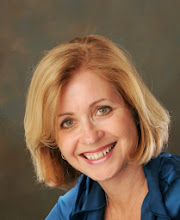Having a standard language – or at least job title– is a good starting place. We can begin to talk about the role of direct care workers, caregiver, attendants and others in the same way we talk about CNAs and home health aides – in words we all understand.
The next step – an important step – is to begin defining what this term means.
What prepares someone to become a Personal Care Aide? What training, at a minimum is required?
The Caregiving Project for Older Americans, a collaboration of the International Longevity Center-USA and the Schmieding Center for Senior Health and Education co-produced a white paper last year titled “The Need for National Training Standards/Guidelines for Privately Paid Geriatric Home Caregivers.”
The paper starts out with these two stories:
Margaret, a 78-year-old widow who lives alone, is normally up and ready for breakfast by 7 A.M. Today, however, she was still asleep when the in-home private duty caregiver arrived at the house. When the caregiver checked on her, Margaret said she wanted to sleep. The caregiver, who has cared for older adults for many years, but who has had no formal caregiver training, assumed Margaret must be more tired than usual this morning and left her alone. She cleaned the house and the kitchen as usual and left without taking further action. The next day, Margaret’s daughter came by to find her mother still in bed. Margaret was admitted to the hospital with a urinary tract infection.
Fred, an 83-year-old retired businessman, relies on in-home private duty home care several hours each day. Today, however, when his caregiver arrived he was uncharacteristically disheveled, acted as if she were a stranger, and gruffly told her he didn’t want her there. The untrained caregiver documented that services were refused and went on to her next client, while Fred was left alone until the next morning. Fred was later hospitalized, with dehydration and delirium.
In both of these situations the outcome would very likely have been different if the caregiver had been professionally trained. Margaret’s caregiver would have been trained to observe changes in behavior and report these behaviors immediately to Margaret’s daughter and health care provider.
Fred’s caregiver would have known that changes in behavior and awareness are signs of potentially serious health issues. She would have known to immediately get help for Fred.
The report goes on to note that caregivers, working in individuals' homes, are generally alone and unsupervised. Often they are the only ones to see an isolated frail elderly person in the course of a day, a week or even longer. Without professional supervision or support, these caregivers are often the deciding factor between an individual living a healthy life filled with meaning and quality, and just barely getting by.
The organizations sponsoring this report are among those who are actively working to educate families about the importance of hiring only professionally trained caregivers. They are working hard to build awareness in families that training offers a qualitative difference in the outcome of the care.
They are also advocating for a national standard of training certification, with training content similar to that required by nursing assistants and home health aides.
We support all of these efforts. We believe, in fact, that quality, professional training is now within reach of every individual who wishes to enter the field of caregiving through the use of online training courses like our Caregiver Certification course (soon to be renamed the Personal Care Aide Certification).
It’s time for families to be educated and to understand the value of having a professionally trained caregiver. And to demand it for anyone providing care to their loved one.





No comments:
Post a Comment